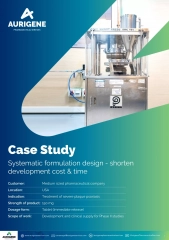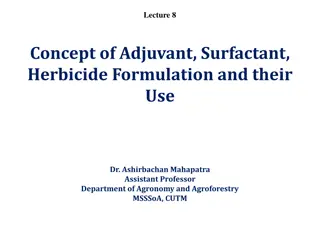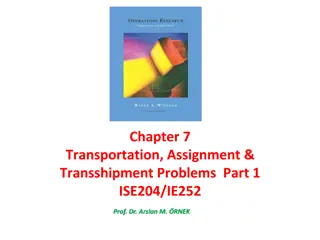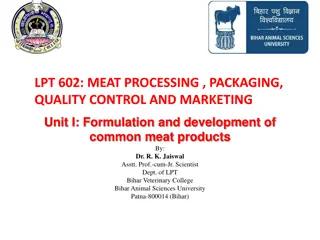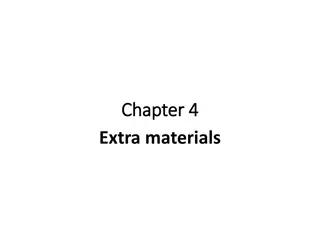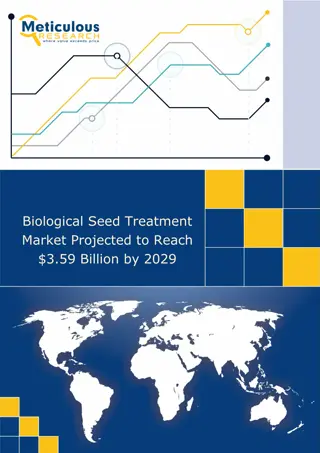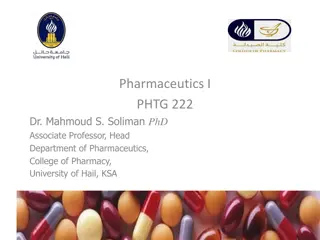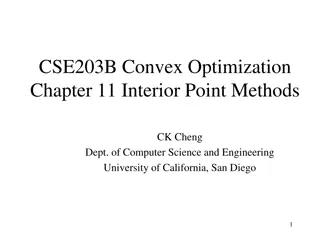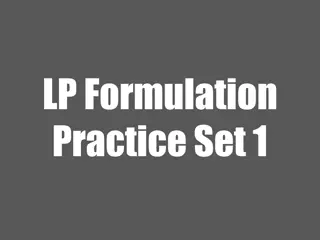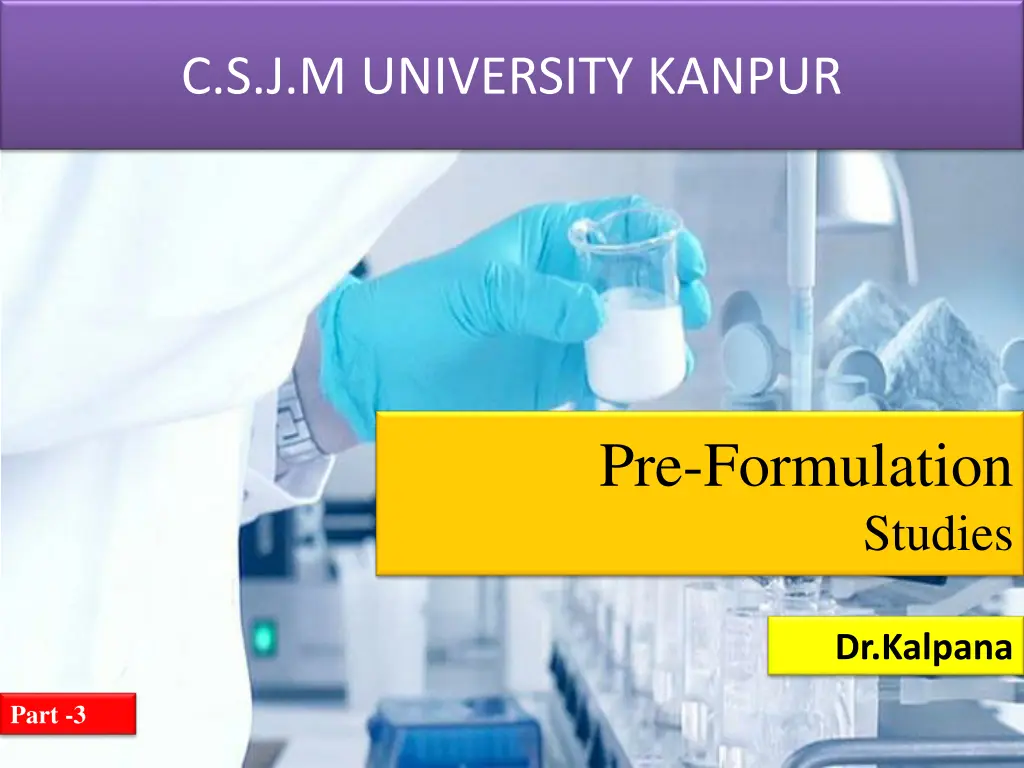
Pre-Formulation Studies at C.S.J.M. University Kanpur
Explore the pre-formulation studies at C.S.J.M. University Kanpur, focusing on pKa determination, solubilization methods, partition coefficient, dissolution rate, stability analysis, and more for drug development. Learn about critical factors influencing drug solubility, permeation, and absorption in pharmaceutical research.
Download Presentation

Please find below an Image/Link to download the presentation.
The content on the website is provided AS IS for your information and personal use only. It may not be sold, licensed, or shared on other websites without obtaining consent from the author. If you encounter any issues during the download, it is possible that the publisher has removed the file from their server.
You are allowed to download the files provided on this website for personal or commercial use, subject to the condition that they are used lawfully. All files are the property of their respective owners.
The content on the website is provided AS IS for your information and personal use only. It may not be sold, licensed, or shared on other websites without obtaining consent from the author.
E N D
Presentation Transcript
C.S.J.M UNIVERSITY KANPUR Pre-Formulation Studies Dr.Kalpana Part -3
pKa Determination pKa is the dissociated constant of a drug. The un-ionized drug is lipid soluble thus permeated through lipid membrane . The ionized substance is lipid insoluble therefore permeation is slow. Degree Of ionization depends on PH.
Solubilization Solubilization is defined as the spontaneous passage of poorly water soluble solute molecules into an aqueous solution of a soap or detergent in which a thermodynamically stable solution is formed
General Method of Increasing the Solubility Addition of co-solvent pH change method. Reduction of Particle size Temperature change method Hydro-trophy Addition of surfactant Dialectical constant. Complexation.
Partition Coefficient A measurement of drug lipophilicity e.g. the ability to cross the cell membrane.
Dissolution Rate constant of dissolution Rate constant of absorption Drug in solution in the G.I fluid K d K a Solid drug in the G.I Fluid Drug systemic circulation When kd<< Ka dissolution is significantly slower and the absorption is described as dissolution rate- limited. The dissolution rate of drug substance in which surface area is constant during dissolution is described by Noyes-Whitney eq.
Constant surface area is obtained by compressing in to a disc of known area with a die and punch apparatus. Hydrodynamic condition are maintained with static-disc dissolution apparatus and Rotating disc apparatus.
Stability Analysis 1.Solution stability. 2. Solid State stability. Solution stability:-The decomposition of drug occurs through hydrolysis,oxidation,Photolysis. Solid State stability- Objective :- identification of stable storage conditions. identification of compatible excipients. Solid-state stability depend on the tempreture,light,humidty,polymorphic chnages,oxidation.
Chemical Properties Cyclodextrine molecules have cylindrical shape with central axial cavity and resemble with shape of truncated cone. The interior cavity is hydrophobic and the out site of the molecule is hydrophilic
Drug Stability The potency should not fall below 95% under the recommended storage condition and the product should still look and perform as it did when first manufactured. Drug degradation occurs by four main processes. 1. Hydrolysis 2. Oxidation 3. Photolysis 4. Trace metal catalysis
Drug - Excipient compatibility Compatibility test play a very important role in the preformulation studies of oral forms. An incompatibility in the dosage form can result in any of the following change:- Change in organoleptic properties. Physical form conversion An decrease in potency.
Method Of Analysis 1.Thermal method Of analysis. DSC DTA 2.Accelerated Stability study. 3.FTIR Spectroscopy. 4.Chromatography. TLC, HPLC, Self interactive chromatography. 5.DRS 6.Miscellaneous. Vapour pressure osmometry Fluorescence's Spectroscopy Radio - labelled techniques.

